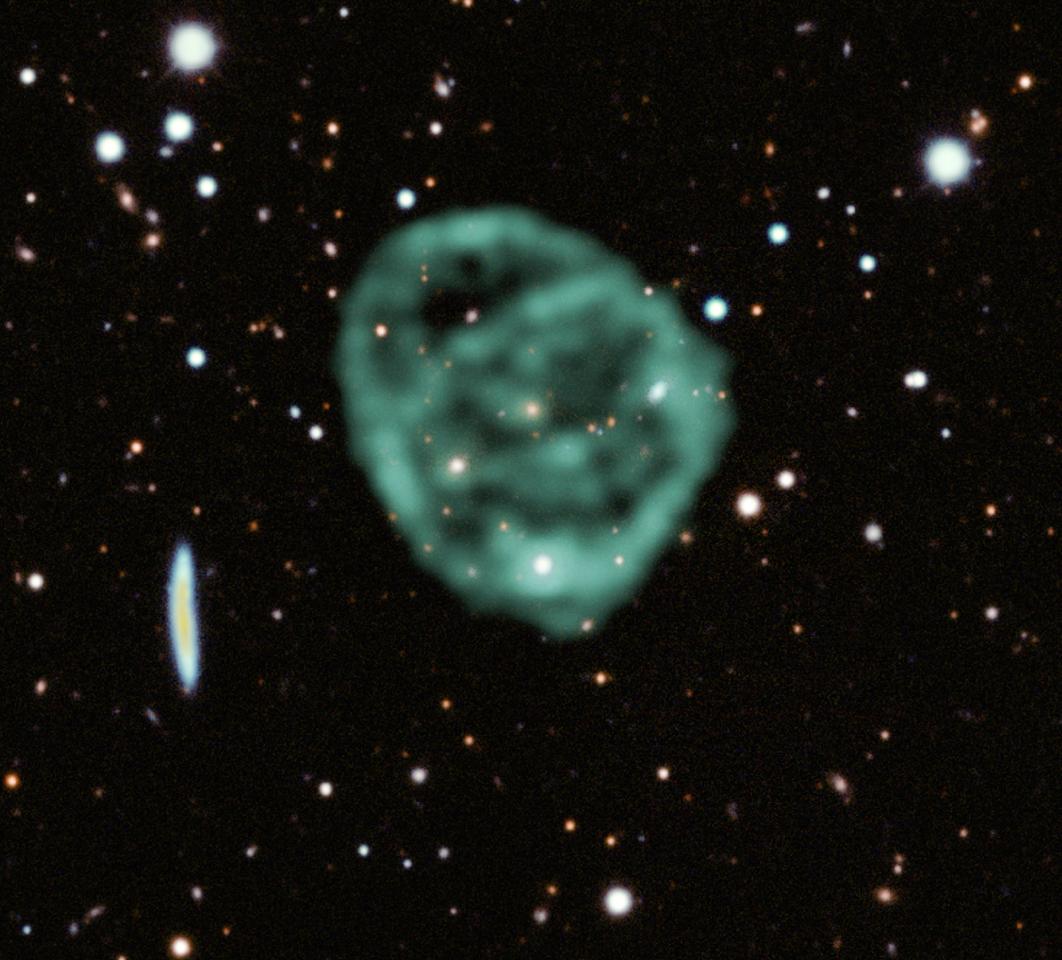It’s not often that space throws something entirely new at you, but in 2019 that’s exactly what happened when astronomers discovered a completely unknown phenomenon they called (ORCs). Now, more data may have revealed just how these rare objects form. Everything you need to know about ORCs is in the name: they’re circular blobs of radio emissions, and they’re odd because exactly what causes them was unknown.
The first few were discovered in data from the Australian Square Kilometer Array Pathfinder (ASKAP) radio telescope, and initially it wasn’t clear whether they were small and inside our galaxy, or gigantic and much farther away. Being so faint and invisible to infrared and optical wavelengths, ORCs were hard to study, but in 2022 that began to help pin down their identity. The latter scenario was found to be true – ORCs are massive, spanning millions of light-years wide and centering on certain galaxies.
And, it turns out, this could be key to understanding them. In the new study, astronomers have found an almost literal smoking gun by linking ORCs to “starburst” galaxies. “These galaxies are really interesting,” said Alison Coil, lead author of the study.
“They occur when two big galaxies collide. The merger pushes all the gas into a very small region, which causes an intense burst of star formation. Massive stars burn out quickly and when they die, they expel their gas as outflowing winds.
” Star births are, of course, bookended by star deaths, so after a while these galaxies undergo huge amounts of simultaneous supernovae. With lots of stars exploding in close proximity around the same time, the gas they belch out is accelerated into winds that flow out of the galaxy at speeds of up to 2,000 km (1,240 miles) per second. And the team suspected that ORCs could be a late stage of that process.
To find out, they examined a galaxy at the center of one ORC in optical and infrared light. And sure enough, there seemed to be a huge amount of bright, hot, compressed gas in the center there. From the data, they determined that the stars in that galaxy were around 6 billion years old, and the frenzied starburst period ended about a billion years ago.
Next, the team ran simulations accounting the properties of the galaxy, its stars and the ORC surrounding it. These showed that the outflowing winds blew for about 200 million years, then stopped. After that, a shock wave rippled through and pushed the hotter gas farther out, creating a radio circle, while another shock wave traveled in the opposite direction and pushed the cooler gas back into the galaxy.
The whole process took about 750 million years, which the team says is within reason for their original estimate of the structure’s age. “To make this work you need a high-mass outflow rate, meaning it’s ejecting a lot of material very quickly,” said Coil. “And the surrounding gas just outside the galaxy has to be low density, otherwise the shock stalls.
These are the two key factors. It turns out the galaxies we’ve been studying have these high-mass outflow rates. They’re rare, but they do exist.
I really do think this points to ORCs originating from some kind of outflowing galactic winds. ” These radio circles might not be so odd anymore. But there’s still plenty to learn about them, the team says, and they could teach us about galaxies in general.
“They can also help us learn more about galactic evolution: do all massive galaxies go through an ORC phase?” said Coil. “Do spiral galaxies turn elliptical when they are no longer forming stars? I think there is a lot we can learn about ORCs and learn from ORCs. ” In the meantime, we’re excitedly awaiting the next cosmic conundrum to emerge from the depths of space.
The research was published in the journal . Source:.
From: newatlas
URL: https://newatlas.com/space/mystery-odd-radio-circles-space-solved/



